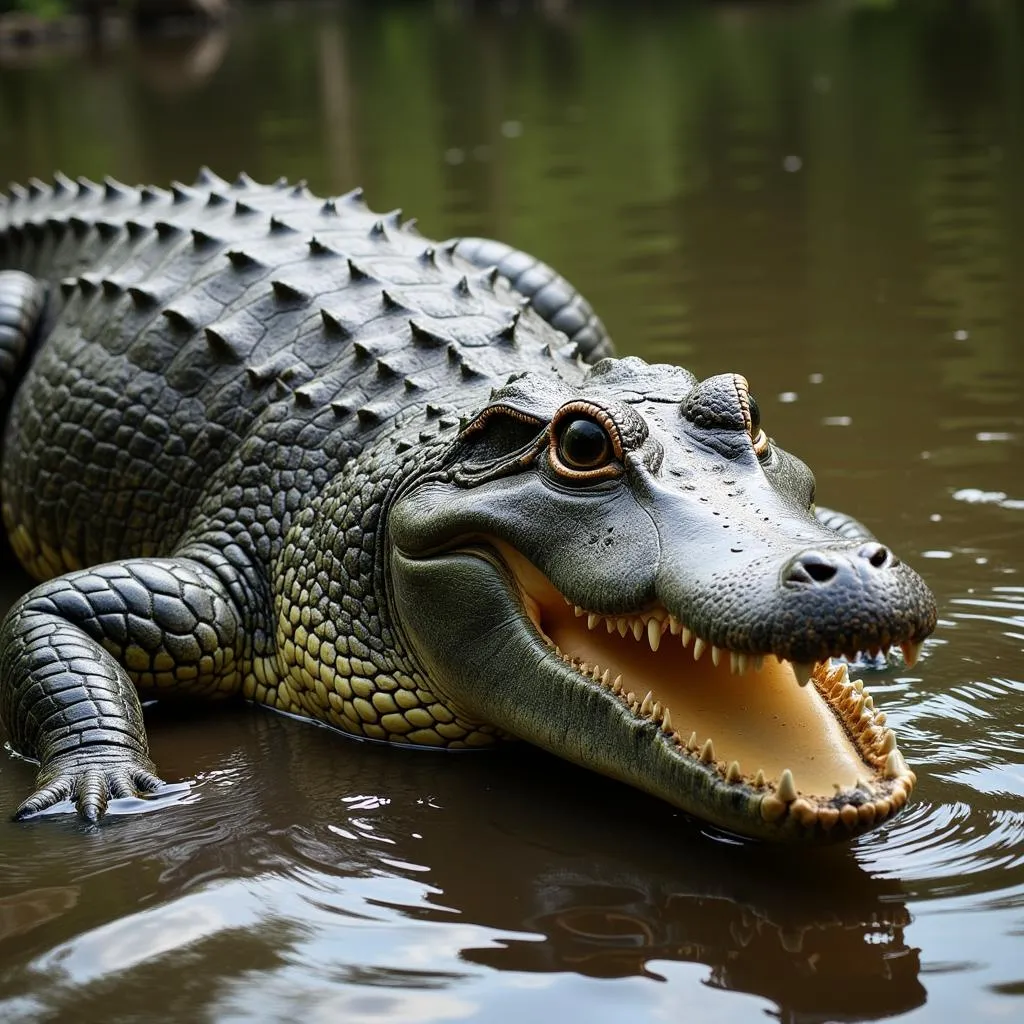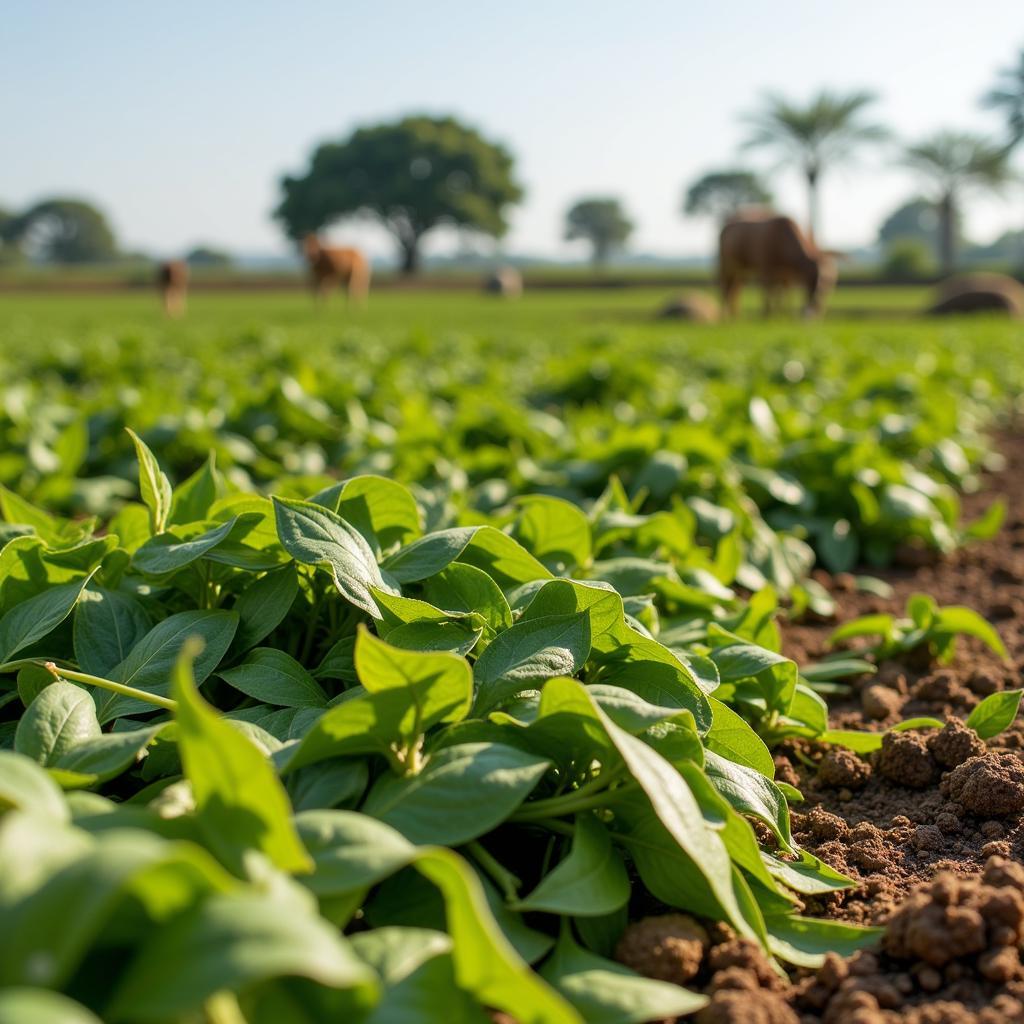African Buffalo Habitat: A Comprehensive Guide
The African Buffalo Habitat plays a vital role in the survival of this iconic species. This article delves into the intricate relationship between the African buffalo and its environment, exploring the various factors that influence its distribution and behavior.
Understanding the African Buffalo’s Needs
African buffaloes, scientifically known as Syncerus caffer, are large bovids found across sub-Saharan Africa. Their habitat preferences are driven by a few key needs: access to water, suitable grazing areas, and sufficient cover from predators. Understanding these requirements is crucial to appreciating the complexity of their habitat selection. Water is particularly vital, as buffaloes need to drink daily, especially during the dry season. They prefer open grasslands and savannas where they can graze on a variety of grasses and herbaceous plants. Areas with scattered trees or thickets offer protection from predators like lions and hyenas. After the opening paragraph, we can see how crucial the environment is to the survival of the African buffalo, particularly the availability of resources like water and adequate cover from predators. Check out more information on the African buffon.
Key Habitats of the African Buffalo
The African buffalo can thrive in a variety of habitats, each offering unique challenges and opportunities. These habitats include savannas, woodlands, forests, and even swamps.
Savannas: The Ideal Habitat
Savannas, characterized by grasslands interspersed with trees, represent the ideal African buffalo habitat. These areas offer a perfect balance of open grazing areas and scattered cover. The abundance of grasses and other vegetation provides ample food sources, while the presence of trees and shrubs offers shade and protection.
Other Habitats
While savannas are preferred, African buffaloes can also be found in woodlands, forests, and swamps. In woodlands, they utilize the denser vegetation for cover. Forests, though less common, offer refuge from extreme weather and predators. Swamps and wetlands provide both water and a unique foraging environment. The diversity of these habitats highlights the adaptability of the African buffalo. For a wider range of African animal insights, explore some compelling African animal documentaries.
Where do African buffaloes live?
African buffaloes primarily inhabit savannas, grasslands, and woodlands across sub-Saharan Africa.
Threats to the African Buffalo Habitat
Unfortunately, the African buffalo habitat faces numerous threats, primarily due to human activities. Habitat loss and fragmentation due to agriculture and expanding human settlements are pushing buffaloes into smaller, isolated areas. This increases competition for resources and makes them more vulnerable to diseases and predators. Hunting and poaching also pose significant threats to buffalo populations, further impacting their habitat use. You can discover more about the location of African Elephants, another iconic African species, in our detailed article on African elephant location.
Conservation Efforts
Various conservation initiatives are underway to protect the African buffalo and its habitat. These efforts focus on establishing protected areas, combating poaching, and promoting sustainable land management practices. Community-based conservation programs are also crucial, involving local communities in the management and protection of buffalo populations. These programs often provide economic incentives for conservation, ensuring the long-term survival of both the buffalo and its habitat. For some captivating visuals of African wildlife, check out our collection of African group animals images. Learn more about the African Elephant Calf on our dedicated page, African elephant calf.
Conclusion
The African buffalo habitat is a complex and vital ecosystem that plays a critical role in the survival of this iconic species. Understanding the factors that influence their habitat selection and the threats they face is essential for effective conservation efforts. By working together, we can ensure that the African buffalo continues to roam the savannas and woodlands of Africa for generations to come.
FAQ
-
What is the main habitat of the African buffalo?
Savannas are the preferred habitat. -
What do African buffaloes eat?
They are herbivores, primarily grazing on grasses and other vegetation. -
What are the main threats to the African buffalo?
Habitat loss, poaching, and disease are the primary threats. -
How can we protect the African buffalo habitat?
Supporting conservation efforts, promoting sustainable land management, and combating poaching are key. -
What is the role of water in the African buffalo habitat?
Water is essential, and buffaloes need to drink daily, especially during the dry season. -
What are some of the predators of the African buffalo?
Lions, hyenas, and crocodiles are among their main predators. -
What is the social structure of African buffalo herds?
They live in large herds, often comprising hundreds or even thousands of individuals.
Common Scenarios
- Tourists observing buffalo herds during safaris.
- Researchers studying buffalo behavior and habitat use.
- Conservationists working to protect buffalo populations and their habitat.
Further Exploration
- Discover more about the behavior of African buffaloes.
- Explore the impact of climate change on African wildlife.
- Learn about other African herbivores and their habitats.
Call to Action: For any inquiries or assistance regarding African wildlife and conservation, please contact us at Phone: +255768904061, Email: kaka.mag@gmail.com or visit us at Mbarali DC Mawindi, Kangaga, Tanzania. Our customer service team is available 24/7.


